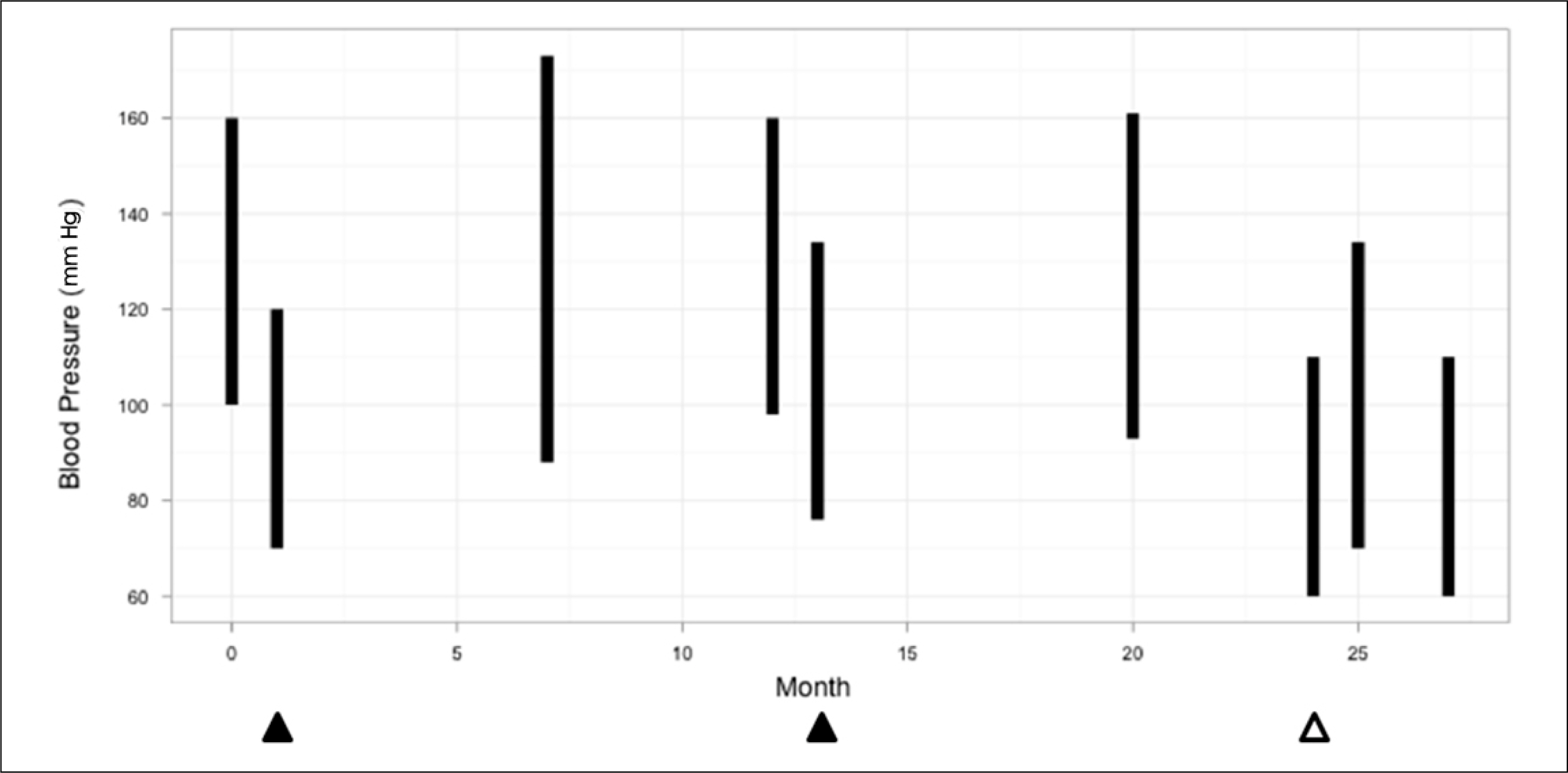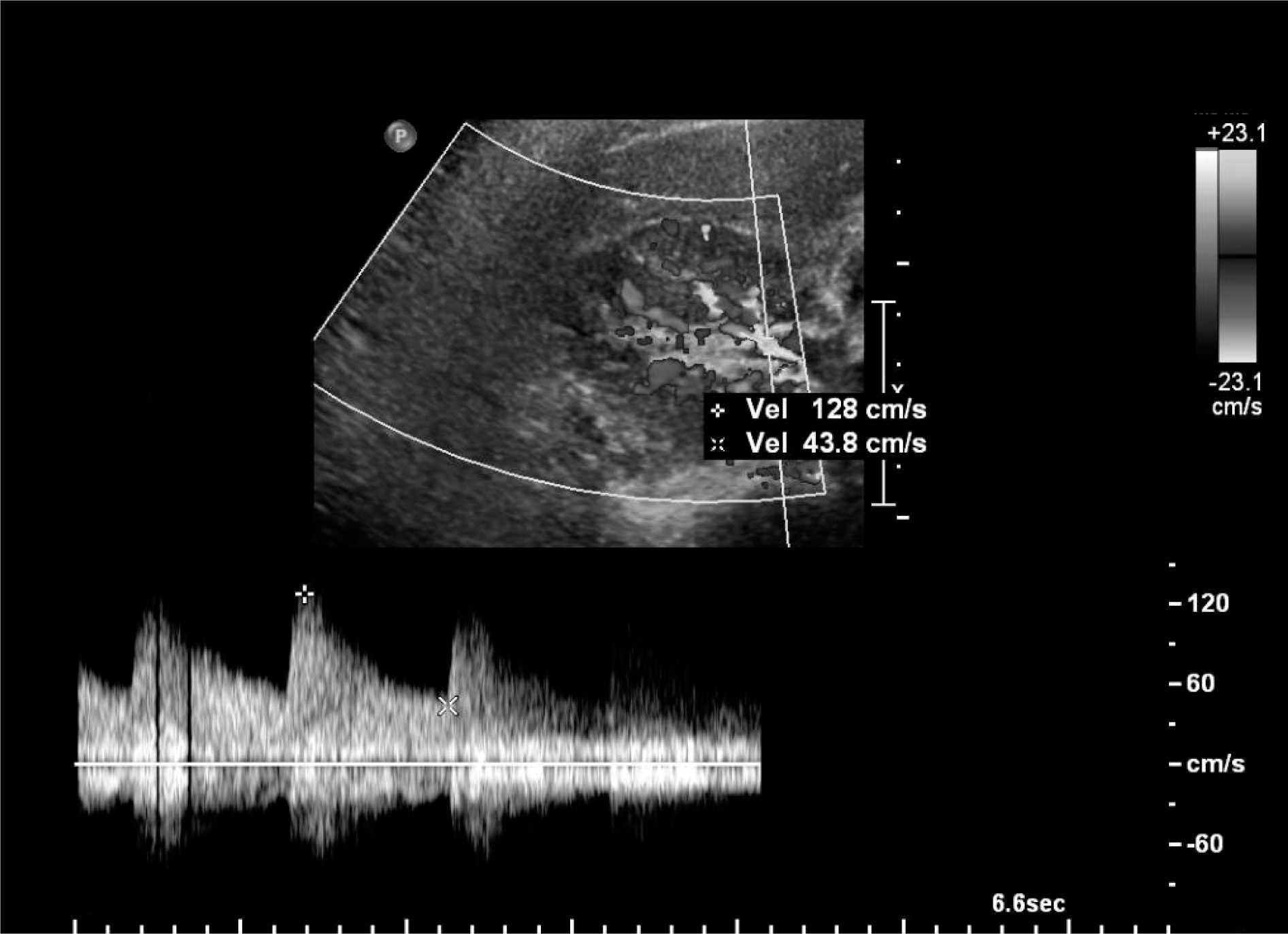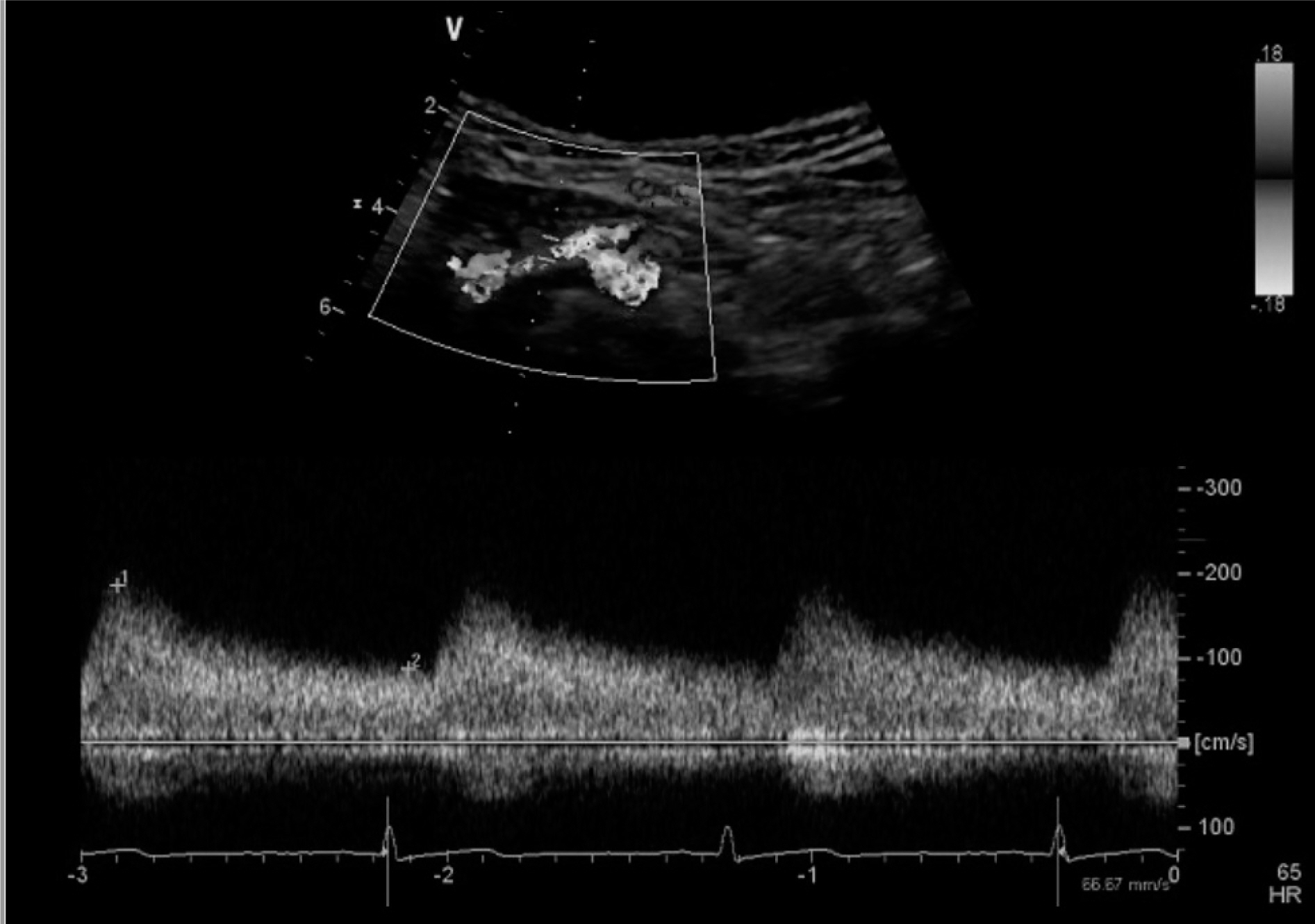J Korean Soc Hypertens.
2013 Jun;19(2):63-69. 10.5646/jksh.2013.19.2.63.
A Case of Renovascular Hypertension Controlled by Renal Autotransplantation
- Affiliations
-
- 1Department of Internal Medicine, Yonsei University College of Medicine, Seoul, Korea.
- 2Department of Pediatrics, Yonsei University College of Medicine, Seoul, Korea.
- 3Department of Surgery, Yonsei University College of Medicine, Seoul, Korea.
- 4Division of Cardiology, Yonsei Cardiovascular Hospital, Yonsei University College of Medicine, Seoul, Korea. shpark0530@yuhs.ac
- KMID: 1500274
- DOI: http://doi.org/10.5646/jksh.2013.19.2.63
Abstract
- Renovascular hypertension caused by renal artery stenosis is an uncommon but curative cause of hypertension in children. We report a case of recurrent severe hypertension caused by renovascular hypertension. After recurrence of hypertension after redo percutaneous transluminal renal angioplasty, the blood pressure was finally controlled by renal autotransplantation. This case demonstrates the importance of considering renovascular hypertension as a cause of severe hypertension in children. Also, renal autotransplantation should be considered as a viable treatment option for treatment of renovascular hypertension that is recurrent after renal angioplasty.
MeSH Terms
Figure
Reference
-
References
1. Tullus K, Brennan E, Hamilton G, Lord R, McLaren CA, Marks SD, et al. Renovascular hypertension in children. Lancet. 2008; 371:1453–63.
Article2. Corbetta JP, Duran V, Burek C, Weller S, Sager C, Dingevan R, et al. Renal autotransplantation for the treatment of renovascular hypertension in the pediatric population. J Pediatr Urol. 2011; 7:378–82.3. Update on the 1987 Task Force Report on High Blood Pressure in Children and Adolescents: a working group report from the National High Blood Pressure Education Program . National High Blood Pressure Education Program Working Group on Hypertension Control in Children and Adolescents. Pediatrics. 1996; 98(4 Pt 1):649–58.4. Yeum CH, Kim JH, Jun JY, Cho CH, Jun KB, Yeum CH, et al. Role for tyrosine kinases in angiotensin II-induced vascular contraction in renovascular hypertensive rats. Korean Hypertens J. 2001; 7:26–34.5. Song HY, Hwang JH, Noh H, Shin SK, Choi DH, Shim WH, et al. The prevalence and associated risk factors of renal artery stenosis in patients undergoing cardiac catheterization. Yonsei Med J. 2000; 41:219–25.
Article6. Daniels SR, Loggie JM, McEnery PT, Towbin RB. Clinical spectrum of intrinsic renovascular hypertension in children. Pediatrics. 1987; 80:698–704.
Article7. Konig K, Gellermann J, Querfeld U, Schneider MB. Treatment of severe renal artery stenosis by percutaneous transluminal renal angioplasty and stent implantation: review of the pediatric experience: apropos of two cases. Pediatr Nephrol. 2006; 21:663–71.8. Cho YS, Suh JW, Lee SJ, Kim KI, Chang HJ, Youn TJ, et al. Efficacy of fractional flow reserve of stenosed renal artery as a predictor of the blood pressure response after angioplasty in patients with renovascular hypertension. Korean Hypertens J. 2008; 14:14–22.9. Imamura H, Isobe M, Takenaka H, Kinoshita O, Sekiguchi M, Ohta M. Successful stenting of bilateral renal artery stenosis due to fibromuscular dysplasia assessed by use of pressure guidewire technique: a case report. Angiology. 1998; 49:69–74.10. Lacombe M. Surgical treatment of renovascular hypertension in children. Eur J Vasc Endovasc Surg. 2011; 41:770–7.
Article11. Serrallach-Mila N, Paravisini J, Alberti J, Mayol-Valls P, Casellas A, Torner-Soler M, et al. New method of revasculari-zation in the surgery of renovascular hypertension: the renal autograft. Angiologia. 1966; 18:93–105.12. Kaufman JJ, Goodwin WE, Waisman J, Gyepes MT. Renovascular hypertension in children: report of seven cases treated surgically including two cases of renal autotrans-plantation. Am J Surg. 1972; 124:149–57.
- Full Text Links
- Actions
-
Cited
- CITED
-
- Close
- Share
- Similar articles
-
- A Case of Renovascular Hypertension Controlled by Renal Artery Embolization
- A Case of Renovascular Hypertension due to Renal Vein Hypoplasia
- Renal Artery Aneurysm in a 13-year-old Child
- A Case of Renovascular Hypertension Controlled by Percutaneous Transluminal Renal Angioplasty with Balloon Dilatatio
- A Case of Renal revascularization using Aortorenal Saphenous Vein Bypass Grafting in Renovascular Hypertension







